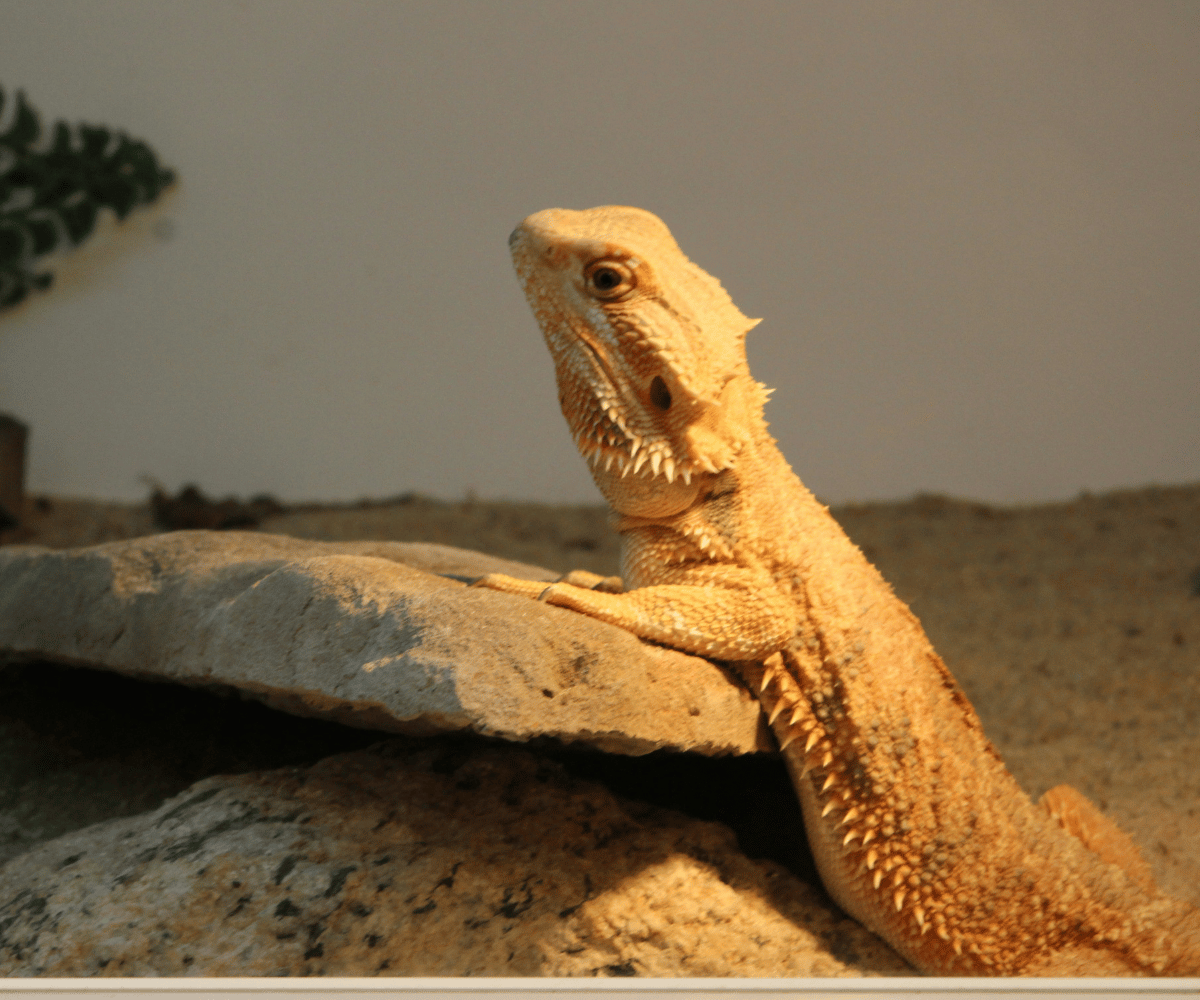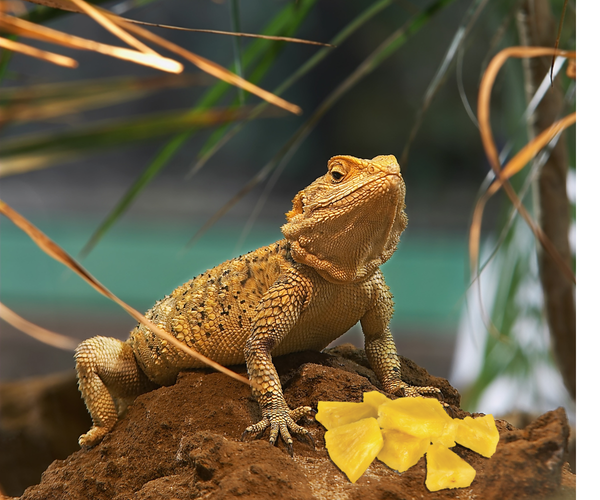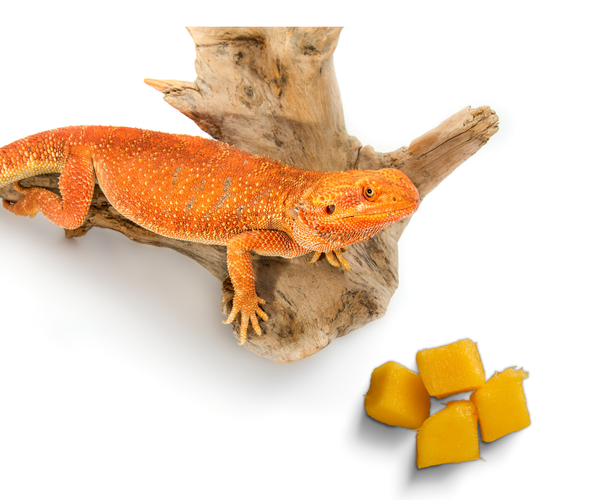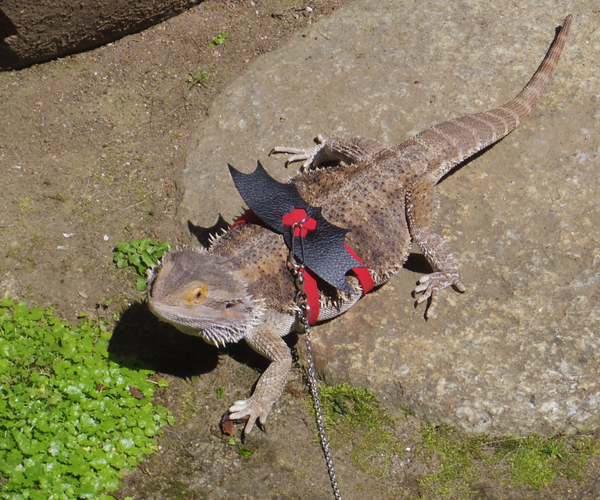Bearded Dragon Lighting Needs
In captivity, providing a source of UVB light is non-negotiable.

Bearded dragons are fascinating creatures and popular pets, but their care is quite specific, especially when it comes to lighting. Proper lighting is crucial for their health and well-being. This comprehensive guide will delve into the intricacies of bearded dragon lighting needs, ensuring your scaly friend thrives in its habitat.
Key Takeaways:
- Understanding the importance of UVB lighting for bearded dragons' health.
- Recognizing the need for a day/night cycle and how to implement it.
- Identifying the best lighting products for bearded dragons.
The Essentials of UVB Lighting
Bearded dragons hail from the arid, sun-drenched regions of Australia, where they bask in the sun's ultraviolet (UV) rays. In captivity, providing a source of UVB light is non-negotiable. UVB rays enable bearded dragons to synthesize vitamin D3, which is essential for calcium metabolism. Without it, they can suffer from metabolic bone disease, a painful and potentially fatal condition.
When selecting a UVB bulb, look for products that offer between 5-10% UVB output. The bulb should span at least two-thirds of your tank's length, ensuring your bearded dragon can bask in its light no matter where it is in the enclosure. Remember to replace UVB bulbs every six months, as their effectiveness diminishes over time, even if the light doesn't go out.
The Importance of a Basking Spot
Creating a basking spot is another critical aspect of your bearded dragon's lighting setup. This warm area should have temperatures between 95-110°F, mimicking the heat they would naturally absorb from the sun. Use a basking bulb to achieve these temperatures, and always monitor the spot with a reliable thermometer.
The basking spot serves as a place for your bearded dragon to regulate its body temperature. As cold-blooded animals, they rely on external heat sources to warm up and digest food properly. Without a warm basking area, bearded dragons can become lethargic and may suffer from digestive issues.
Day and Night Cycles
Just like in their natural habitat, bearded dragons need a clear distinction between day and night within their enclosure. Aim for 12-14 hours of light during the day and complete darkness at night. This cycle can be easily maintained with the help of a timer, which automates the lights to turn on and off at the same times each day.
The absence of light at night is just as important as the presence of light during the day. It allows your bearded dragon to experience a natural sleeping pattern, which is essential for their overall health and stress levels. Avoid using colored lights at night, as they can disrupt your pet's sleep cycle.
Temperature Regulation and Lighting
While UVB and basking lights contribute to the enclosure's heat, it's important to maintain ambient temperatures as well. The cool side of the tank should stay between 75-85°F. Use a combination of thermometers and thermostats to monitor and adjust temperatures as needed.
Inadequate temperatures can lead to a host of health issues for bearded dragons, including respiratory infections and poor digestion. By providing the right lighting and heat sources, you ensure your bearded dragon's environment is as close to its natural habitat as possible.
Choosing the Right Bulbs
When shopping for lighting, you'll encounter a variety of bulbs, each with its own purpose. For UVB, fluorescent tubes or compact bulbs designed specifically for reptiles are the best choices. For the basking spot, halogen or incandescent bulbs are effective in providing concentrated heat.
Always opt for high-quality bulbs from reputable brands to ensure the safety and health of your bearded dragon. Cheaper bulbs may not provide the correct wavelengths or heat and could even be dangerous if they malfunction.
Lighting Fixtures and Placement
The right fixtures are just as important as the bulbs themselves. Use fixtures that are compatible with the bulbs' wattage and type. Secure them properly to prevent any accidents, and place them in a way that allows your bearded dragon to get close enough to bask but not so close that it could get burned.
Reflectors can be used to direct the light and heat towards the basking area, ensuring your bearded dragon gets the maximum benefit. Make sure that the UVB light fixture covers the length of the tank to provide even exposure for your pet.
Monitoring and Adjusting Lighting
Regularly check your lighting setup to ensure everything is functioning correctly. Use timers to maintain consistent day/night cycles, and adjust the distance of the basking light to achieve the correct temperatures. It's also important to monitor the UVB levels with a UVB meter, especially as the bulb ages.
If you notice your bearded dragon is spending too much time in the basking area or avoiding it altogether, it may be an indication that the lighting needs adjustment. Pay attention to these behaviors as they can provide valuable insights into the comfort and health of your pet.
Safety Precautions
Safety should always be a priority when dealing with electrical equipment in your bearded dragon's enclosure. Ensure all wires are out of reach and that there's no risk of water coming into contact with the fixtures. Use guards for basking bulbs to prevent your bearded dragon from getting too close and potentially burning itself.
Additionally, never place the enclosure in direct sunlight as it can cause overheating, even if the lights inside are turned off. Always provide shaded areas where your bearded dragon can escape from the light if it becomes too intense.
The Impact of Lighting on Behavior
Lighting plays a significant role in your bearded dragon's behavior. Proper lighting encourages natural behaviors such as basking, exploring, and feeding. If the lighting is inadequate, you may notice signs of stress or illness, such as a lack of appetite or abnormal sleeping patterns.
By closely mimicking the natural light cycles and conditions of their native environment, you'll see your bearded dragon exhibit healthy, active behaviors. This not only ensures their well-being but also makes for a more engaging pet.
Advanced Lighting Tips
For the dedicated bearded dragon owner, there are additional lighting techniques that can enhance your pet's environment. Consider using a light dimming system to simulate sunrise and sunset, providing a more natural transition between day and night. You can also explore different types of full-spectrum lighting to further replicate the natural conditions of the Australian outback.
Remember, the more effort you put into perfecting your bearded dragon's lighting, the happier and healthier your pet will be. It's an investment in their quality of life and in the enjoyment you'll get from watching them thrive.
Summary
In summary, bearded dragon lighting needs are complex but manageable with the right knowledge and equipment. UVB lighting, a basking spot, and a consistent day/night cycle are non-negotiable elements of a proper habitat. By choosing the right bulbs and fixtures, monitoring and adjusting the setup, and taking safety precautions, you can create an environment that allows your bearded dragon to live a healthy and happy life.
FAQ Section
Q: How often should I replace my bearded dragon's UVB bulb? A: UVB bulbs should be replaced every six months to ensure they continue to emit the necessary levels of UVB light for your bearded dragon's health.
Q: Can I use any light bulb for my bearded dragon's basking spot? A: No, you should use a bulb specifically designed for reptile basking, such as a halogen or incandescent bulb, to provide the appropriate heat and light intensity.
Q: Is it okay to leave my bearded dragon's lights on all the time? A: No, bearded dragons require a day/night cycle with 12-14 hours of light followed by complete darkness at night to maintain their natural sleeping patterns and overall health.




